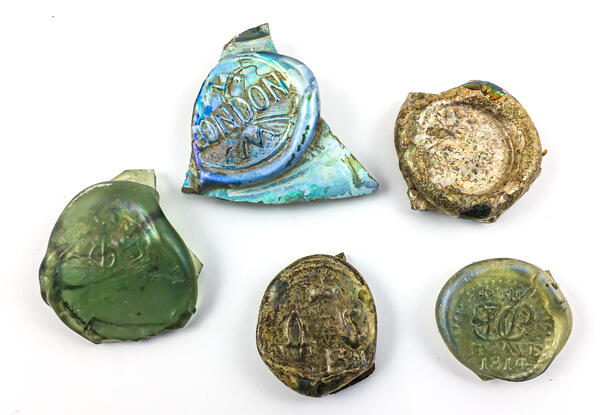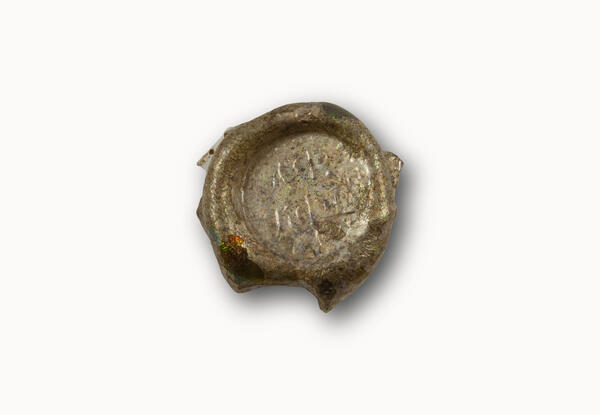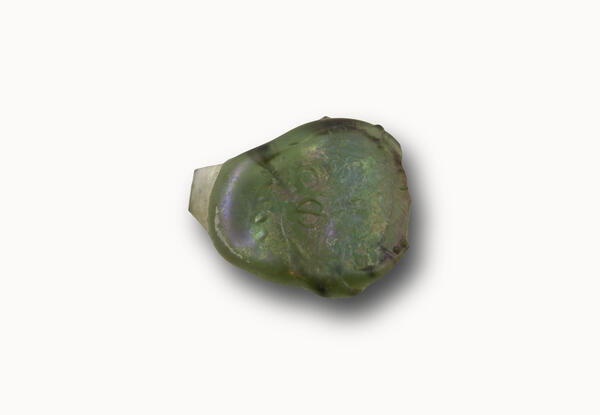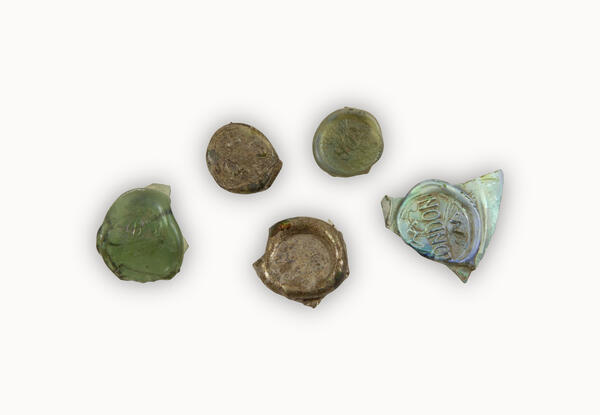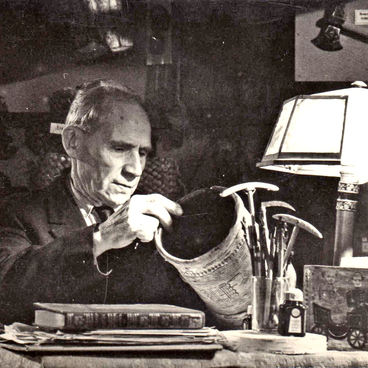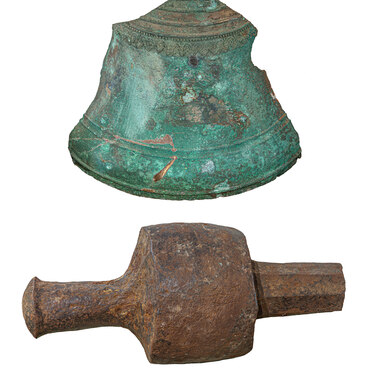The increasing pace and scale of archaeological excavations in towns with preserved historical buildings constantly provide new material for experts to study. Familiar antiquities are accompanied by a growing number of objects from the 17th–19th centuries. For a long time, many of them were considered a source of little information and therefore not valuable enough. This belief also applied to glass fragments.
In one of the sections of Gorokhovets, a log structure was partially explored, and there were many pieces of broken shtof bottles found next to it. The find included intact vessels, as well as fragments.
This discovery instigated further research. Based on the analysis of cartographic documents, it was possible to determine that the discovered building was part of the complex of a tavern, which was located on the territory of the main town square in the 18th century.
In addition to the bottle fragments, round disks of glass were also found. They looked like blobs, embossed with Latin or Cyrillic letters, dots, and lines. These bottle seals also had the designation of the production year in Arabic or Roman numerals. They were usually attached by manufacturers on the shoulder of a bottle or a shtof bottle.
Many of the inscriptions are not that difficult to decipher. The letter “Ф” (corresp. to English F — ed.) on the seal preceded the name of the factory. The volume was indicated by the letters “Б” (B) — for a bottle, “ПБ ” (PB) — for a half-bottle, “Ш” (Sh) — for a shtof. However, they were used less often than other abbreviations: a half-btl., a btl., and a half-sh.
Not all of the blob seals that were found in Gorokhovets had discernable symbols, but two of them indicated:
1. LONDON, which may hint at the foreign origin of the seal;
2. FSh, Half-btl., 1814.
This information helped date the find, as well as determine that the bottle was made at the Shiryatino factory that belonged to the 1st guild merchants Grigory Rylov and Spiridon Rylov. A half-bottle is a size equal to approximately 300 grams.
Later, in the mid-1840s, the glass factory in Shiryatino became the property of Olga Mikhailovna Saltykova — the mother of the famous Russian writer Mikhail Saltykov-Shchedrin. In 1855, the factory was shut down, and its territory was allocated for a barnyard.
In one of the sections of Gorokhovets, a log structure was partially explored, and there were many pieces of broken shtof bottles found next to it. The find included intact vessels, as well as fragments.
This discovery instigated further research. Based on the analysis of cartographic documents, it was possible to determine that the discovered building was part of the complex of a tavern, which was located on the territory of the main town square in the 18th century.
In addition to the bottle fragments, round disks of glass were also found. They looked like blobs, embossed with Latin or Cyrillic letters, dots, and lines. These bottle seals also had the designation of the production year in Arabic or Roman numerals. They were usually attached by manufacturers on the shoulder of a bottle or a shtof bottle.
Many of the inscriptions are not that difficult to decipher. The letter “Ф” (corresp. to English F — ed.) on the seal preceded the name of the factory. The volume was indicated by the letters “Б” (B) — for a bottle, “ПБ ” (PB) — for a half-bottle, “Ш” (Sh) — for a shtof. However, they were used less often than other abbreviations: a half-btl., a btl., and a half-sh.
Not all of the blob seals that were found in Gorokhovets had discernable symbols, but two of them indicated:
1. LONDON, which may hint at the foreign origin of the seal;
2. FSh, Half-btl., 1814.
This information helped date the find, as well as determine that the bottle was made at the Shiryatino factory that belonged to the 1st guild merchants Grigory Rylov and Spiridon Rylov. A half-bottle is a size equal to approximately 300 grams.
Later, in the mid-1840s, the glass factory in Shiryatino became the property of Olga Mikhailovna Saltykova — the mother of the famous Russian writer Mikhail Saltykov-Shchedrin. In 1855, the factory was shut down, and its territory was allocated for a barnyard.

